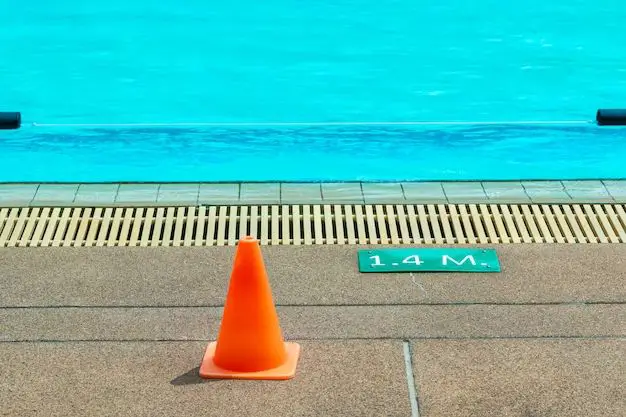When installing an outdoor water line, one of the most important considerations is how deep to bury the pipe. The depth requirements can vary depending on climate conditions and local building codes, but there are some general guidelines to follow for proper installation.
Page Contents
Why Depth Matters
Burying water lines at the proper depth is crucial for several reasons:
- Prevent freezing – In cold climates, water lines must be below the frost line to avoid freezing and bursting in winter. The frost line depth can range from 12-48 inches depending on location.
- Avoid damage – Adequate burial depth protects pipes from being hit or damaged by landscaping equipment, vehicles, tree roots, etc.
- Maintain pressure – Required pressure and flow rates are easier to maintain when supply lines are a consistent depth.
- Drainage – Proper drainage occurs more easily when lines are buried at lower depths away from the surface.
Recommended Burial Depth
Most building codes require a minimum burial depth of 12-18 inches for outdoor water lines. However, deeper depths are often better. Here are some general guidelines for recommended burial depths:
| Location | Recommended Depth |
|---|---|
| Underground water main | 4 – 6 feet |
| Branch lines to fixtures | 18 – 24 inches |
| Under pavements/driveways | 24 – 48 inches |
| Under planted areas | 12 – 18 inches |
| In cold climates | Below frost line |
For branch lines connecting to outdoor faucets, sprinklers, or irrigation systems, 18-24 inches is ideal. Main underground water lines leading to the home should be buried deeper, from 4-6 feet if possible. Under paved areas like driveways, burying lines 24-48 inches deep protects from heavy loads. In very cold climates, main lines must extend below the frost line (deepest depth the ground usually freezes in winter). This prevents water from freezing.
Digging Safety
Proper precautions must be taken when digging trenches for water lines:
- Carefully hand dig around other buried utilities to avoid damage.
- If using machinery, call 811 to have underground utility lines marked before starting.
- Dig trenches with angled sides to avoid collapse on workers.
- Make trenches wide enough to allow access for installation and repairs.
- Provide structural support for piping if trenches will be open for extended periods.
- Keep soil moist during installation to avoid excessive settling later.
- Backfill and compact soil in layers around pipe to support and protect it.
Factors That Affect Burial Depth
When planning your outdoor water line project, there are several important factors to consider that can impact the required burial depth:
Climate and Frost Line
In regions with very cold winters, the frost line depth determines how deep lines must be buried to avoid freezing. This is usually the main factor in determining depth for the main water supply line. Frost lines typically range from 12 inches in southern warm climates to 48 inches in northern regions.
Soil Conditions
Sandy loose soil requires deeper burial than hard packed clay soil to properly support pipe. Loose or marshy soil may allow lines to shift and settle over time if not buried deeply enough. Dig at least 6 inches deeper in loose soil.
Size of Pipe
Larger diameter water lines should be buried deeper than smaller branch lines or taps. Gravity and pressure have more impact on wider pipes, so increased depth stabilizes them. Follow minimum guidelines for small branch pipes, but go 24 inches or deeper for wider mains.
Local Building Codes
Most municipalities specify a minimum depth for buried water lines in local plumbing or building codes. Be sure to check the required depth for your area when planning a project. This mandated minimum takes precedence over guidelines.
Irrigation Systems
Water lines connecting to underground irrigation or sprinkler systems often need to be buried 12-18 inches deep. This allows proper grading and drainage for the heads while avoiding freeze damage in winter.
Vehicle Loads
Where vehicles will be driving over water lines, increase burial depths to at least 24-48 inches per local codes. This protects pipes from heavy loads and damage. Trenches under driveways or parking areas need deeper lines.
Slope of Ground
On sloped sites, pipes should be buried at consistent depths following the grade rather than a fixed depth. Consistent coverage plus a bit deeper at high points avoids exposure on downhill slopes.
Landscaping
Areas that will have trees, shrubs, or hedges planted above water lines should have 12-18 inch depths to avoid root damage. Where existing vegetation has aggressive roots, go 24 inches deep if possible.
Conclusion
Burying outdoor water lines properly is important for protection, longevity, and efficient operation. Follow the general guidelines of 18-24 inches for branch lines, and up to 4-6 feet for main underground lines. But several location-specific factors like climate, soil, and codes also impact required depth. Consider all aspects of the site to determine optimal burial depth before starting your water line installation project.
